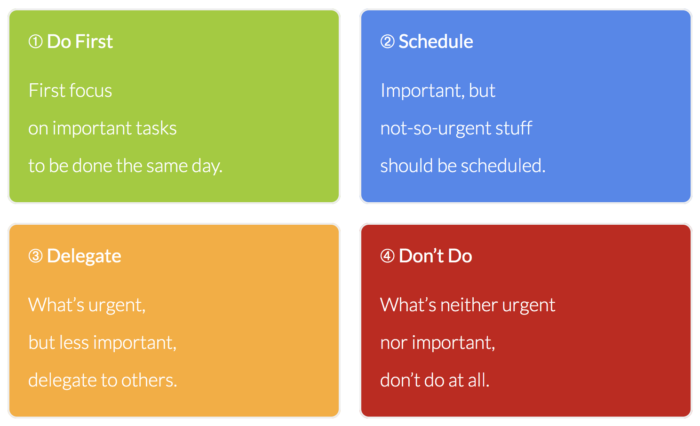Few things can make us feel more accomplished than crushing a to-do list–and science backs up this momentary thrill. Ticking off a task releases dopamine in the brain, and we all crave this “feel-good” neurotransmitter. The more tasks we complete, the more chemical rewards we enjoy.
But to-do lists can be a misguided productivity tool. From the moment we have daily swim practice or a history paper due, we learn that time management means prioritizing what’s on our schedule. However, as the late Stephen Covey said, we need to schedule our priorities.
The problem with to-do lists
Humans engage in a variety of cognitive biases, or systematic thinking errors. The “planning fallacy,” in particular, is one that we see proof of again and again. Research shows that we consistently underestimate how much time, money, or effort a task will require.
Perhaps we should stop trying altogether. When we squeeze our work into a checklist or a schedule based on flawed time estimates, we create unrealistic expectations—and potentially, set ourselves up for failure.
Crossing non-essential tasks off a list may be satisfying, but it’s also a way to avoid more important work. And the things we avoid are usually activities that will move the needle, like strategizing, creating, or deep thinking. Instead of relying on to-do lists, we can schedule our days to achieve peak performance. Here are a few ways to get started:
Prioritize what’s important, not what’s urgent
When notifications are pinging, and colleagues are tapping on your shoulder, it can feel like every task is a top priority. There’s a fundamental difference, however, between what’s essential and what’s urgent. The Eisenhower decision matrix offers a simple way to categorize tasks. It can be helpful when you’re trying to define how much focus, rather than time, each project deserves.
Quadrant 1 tasks are urgent and important. Spending all your time in this “crisis quadrant” will inevitably create stress and exhaustion. Quadrant 3 includes urgent, but not important tasks, like a form your coworker wants you to complete by the end of the day. In quadrant 4, tasks aren’t urgent or important. They’re mostly busy work and distractions, from checking social media accounts to filing paperwork. Quadrant 2 includes tasks that are important but not urgent. When we tackle mission-critical projects, we’re working in this vital zone.
Figure out when you work best, and utilize that to your advantage
Peak performance is closely tied to flow–a state of deep, almost meditative concentration famously investigated by psychologist Mihaly Csikszentmihalyi. We can’t always flip a switch and slide right into flow, but we can increase the odds of getting there by doing essential work during our peak hours.
To understand your own peak hours, make a spreadsheet and record your energy levels throughout the day. Track how your focus, creativity, and motivation shifts at the end of each hour or two. After a couple of weeks, you should begin to see clear patterns. Then, use your peak hours for critical projects and protect this precious time at all costs.
Personalize your strategy
Our professional roles also affect how we work. Y Combinator cofounder Paul Graham says most people require either a maker’s schedule or a manager’s schedule. When you’re a manager, you need to structure your time around meetings and divide your calendar into small time blocks, punctuated with appointments. Makers—such as programmers, writers, and artists—need large chunks of time to solve creative problems. That’s why they often struggle to work productively or find flow with a manager’s schedule.
Some people thrive as makers but are expected to keep a manager’s schedule. In this case, Graham suggests setting office hours that allow for deep focus. You can also try to add a 15-minute margin between each meeting when you find that your manager’s calendar leaves you no time to finish everything.
You can also try scheduling daily, weekly, or monthly focused work sessions. Or, test-drive a system like The Da Vinci Schedule, which moves between deep dives and lighter work periods. It’ll take some trial and error to figure out what works best for you, but you do need to be intentional about your strategy. Otherwise, you’ll find that you will lose your peak hours to interruptions and distractions.
When you capitalize on your peak hours, you’ll find that it becomes easier to achieve innovative, consistent results. You’ll also notice that it becomes easier to work long hours when necessary, and you’ll experience less burnout in the process.
A study by Dale Carnegie even found that organizations with engaged employees—who are motivated, creative, and enjoy their work—outperform those with less engaged staff by 202%.
Keep in mind that your peak hours may evolve. Life circumstances, projects, and responsibilities could shift you from a night owl to an early-morning lark. But try to stay connected to your own rhythms and see how they fluctuate. When you don’t try to fight your body, it’s much easier for your mind to follow.















Send Comment: